Dear Typhlonectes Keeper
Caecilians are perhaps the least known group of amphibians. Worryingly, the conservation status of many is unknown and there is surprisingly little published on their captive care. We are aware that a great deal of knowledge exists in both the private sector and in many institutions. We are currently compiling information concerning the captive husbandry and reproduction of Typhlonectes spp. We aim to write husbandry guidelines on Typhlonectes spp. and make these available to members of the European Association of Zoos and Aquaria (EAZA). It is our hope that this will lead to advances in the captive husbandry and subsequent breeding of Typhlonectes in European institutions.
We would be extremely grateful if you would take the time to fill out the attached questionnaire and return it to us. Please return your completed questionnaires to Benjamin.Tapley@durrell.org. The deadline for questionnaire submission is the 1st of March 2008.
Yours sincerely
Benjamin Tapley.
Keeper - Herpetology
Durrell Wildlife Conservation Trust
Direct: +44(0)1534 860066
Tel: +44 (0)1534 860000
Fax: +44 (0)1534 860001
Benjamin.Tapley@Durrell.org
www.durrell.org
Les Augrès Manor, La Profonde Rue,
Trinity, Jersey JE3 5BP
Channel Islands, United Kingdom
Typhlonectes sp. questionnaire
If you keep more than one species of Typhlonectes please write which species you are referring to in each of your answers below.
General
What species of Typhlonectes do you keep?
How long have you been keeping them?
Housing.
What are the dimensions of the enclosures you keep your animals in?
What substrate (if any) do you use?
Do you have any live/artificial plants in the set up? If you have live plants, which species do you have?
Do you provide refugia? If so what do you use?
Do you keep your Typhlonectes in a group or individually?
If you keep Typhlonectes in a group are there any associated problems? E.g. resource monopolisation by certain individuals or aggression? How did you monitor such problems?
Do you maintain any other species in the same enclosure?
Were there any problems associated with keeping Typhlonectes in the same enclosure as other species?
Lighting and water
Do you provide lighting? If so what kind of lighting do you provide?
What is the photoperiod in your enclosure? Does this remain constant throughout the year?
What water do you use for your Typhlonectes? E.g. Tap water/rain water/RO water?
What depth of water do you keep your Typhlonectes in?
Do you use any treatments/conditioners in the water? If so what brands?
How often do you carry out water changes for your caecilians? how much of the water do you change.
What temperature do you heat the water?
Do you use any filtration in the enclosure, if so what type?
Diet
What do you feed your Typhlonectes?
Do you use dietary supplements? If so what brand do you use, and how often do you supplement food?
How often do you feed and in what quantity?
How do you deliver the food?
Have any particular diets caused problems?
Are there any special dietary requirements for different aged animals? E.g. do you feed adults the same diet as juveniles?
Reproduction
Have you bred your Typhlonectes? If yes, to what generation?
How often do you breed your Typhlonectes?
Did you condition the animals to breed? E.g. through diet, group size changes, temperature changes, raising water levels etc.
What time of year did you witness, mating and/or birth?
At what sex ratio do you keep your animals?
How many juveniles did the female give birth to? Was there any neonatal mortality?
Were juveniles housed separately?
Did you manage to raise all juveniles successfully?
At what age did juveniles first feed, and on what?
Do you have any information on rates of growth?
At what age did your juveniles reach sexual maturity?
Health
Have you ever have any health issues? If yes, please describe the issues and treatment.
What is the maximum longevity you have recorded for Typhlonectes in captivity?
Do you keep any other species of caecilian? If yes, which species.
If you have some information that does not fit into the above please feel free to include it here.
Thank you very much for your time.
Additional information
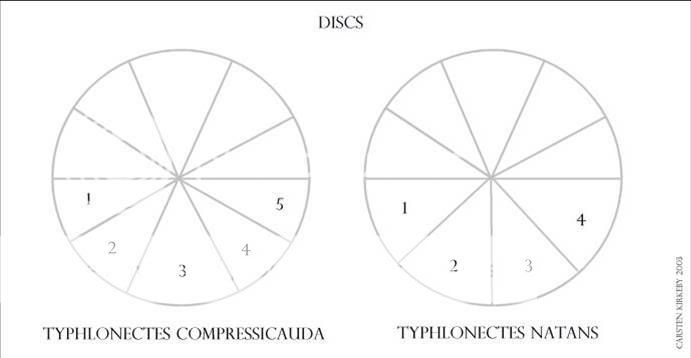
Figure 1 The cloacal discs of Typhlonectes natans and T. compressicauda. The lower half of the discs are divided in either 4 or 5 sections depending on the species.

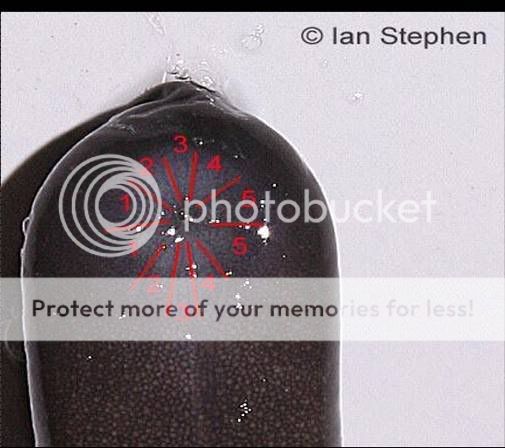
Figure 2 The caudal disc in T. compressicauda.
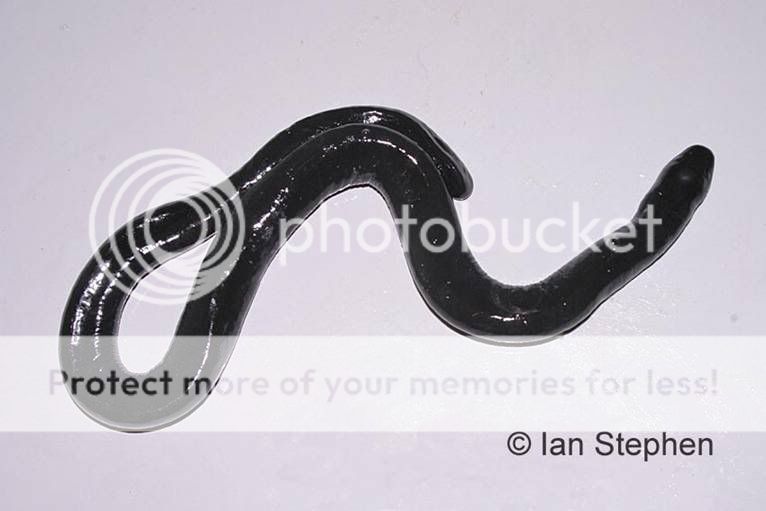
Figure 3 Typhlonectes natans

Figure 4 Typhlonectes compressicauda (NB – difference in colour, and distinct tail ‘fin’)
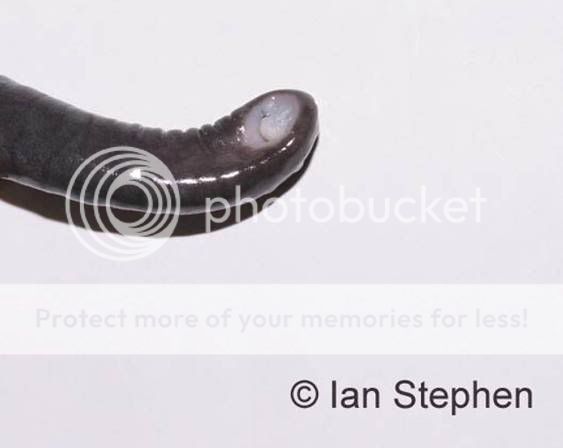
Figure 5 Male T. natans
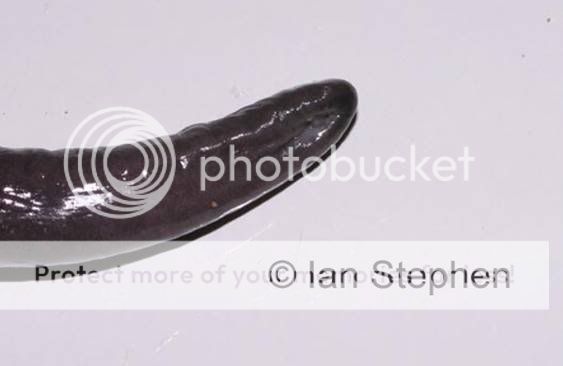
Figure 6 female T. natans
Caecilians are perhaps the least known group of amphibians. Worryingly, the conservation status of many is unknown and there is surprisingly little published on their captive care. We are aware that a great deal of knowledge exists in both the private sector and in many institutions. We are currently compiling information concerning the captive husbandry and reproduction of Typhlonectes spp. We aim to write husbandry guidelines on Typhlonectes spp. and make these available to members of the European Association of Zoos and Aquaria (EAZA). It is our hope that this will lead to advances in the captive husbandry and subsequent breeding of Typhlonectes in European institutions.
We would be extremely grateful if you would take the time to fill out the attached questionnaire and return it to us. Please return your completed questionnaires to Benjamin.Tapley@durrell.org. The deadline for questionnaire submission is the 1st of March 2008.
Yours sincerely
Benjamin Tapley.
Keeper - Herpetology
Durrell Wildlife Conservation Trust
Direct: +44(0)1534 860066
Tel: +44 (0)1534 860000
Fax: +44 (0)1534 860001
Benjamin.Tapley@Durrell.org
www.durrell.org
Les Augrès Manor, La Profonde Rue,
Trinity, Jersey JE3 5BP
Channel Islands, United Kingdom
Typhlonectes sp. questionnaire
If you keep more than one species of Typhlonectes please write which species you are referring to in each of your answers below.
General
What species of Typhlonectes do you keep?
How long have you been keeping them?
Housing.
What are the dimensions of the enclosures you keep your animals in?
What substrate (if any) do you use?
Do you have any live/artificial plants in the set up? If you have live plants, which species do you have?
Do you provide refugia? If so what do you use?
Do you keep your Typhlonectes in a group or individually?
If you keep Typhlonectes in a group are there any associated problems? E.g. resource monopolisation by certain individuals or aggression? How did you monitor such problems?
Do you maintain any other species in the same enclosure?
Were there any problems associated with keeping Typhlonectes in the same enclosure as other species?
Lighting and water
Do you provide lighting? If so what kind of lighting do you provide?
What is the photoperiod in your enclosure? Does this remain constant throughout the year?
What water do you use for your Typhlonectes? E.g. Tap water/rain water/RO water?
What depth of water do you keep your Typhlonectes in?
Do you use any treatments/conditioners in the water? If so what brands?
How often do you carry out water changes for your caecilians? how much of the water do you change.
What temperature do you heat the water?
Do you use any filtration in the enclosure, if so what type?
Diet
What do you feed your Typhlonectes?
Do you use dietary supplements? If so what brand do you use, and how often do you supplement food?
How often do you feed and in what quantity?
How do you deliver the food?
Have any particular diets caused problems?
Are there any special dietary requirements for different aged animals? E.g. do you feed adults the same diet as juveniles?
Reproduction
Have you bred your Typhlonectes? If yes, to what generation?
How often do you breed your Typhlonectes?
Did you condition the animals to breed? E.g. through diet, group size changes, temperature changes, raising water levels etc.
What time of year did you witness, mating and/or birth?
At what sex ratio do you keep your animals?
How many juveniles did the female give birth to? Was there any neonatal mortality?
Were juveniles housed separately?
Did you manage to raise all juveniles successfully?
At what age did juveniles first feed, and on what?
Do you have any information on rates of growth?
At what age did your juveniles reach sexual maturity?
Health
Have you ever have any health issues? If yes, please describe the issues and treatment.
What is the maximum longevity you have recorded for Typhlonectes in captivity?
Do you keep any other species of caecilian? If yes, which species.
If you have some information that does not fit into the above please feel free to include it here.
Thank you very much for your time.
Additional information

Figure 1 The cloacal discs of Typhlonectes natans and T. compressicauda. The lower half of the discs are divided in either 4 or 5 sections depending on the species.


Figure 2 The caudal disc in T. compressicauda.

Figure 3 Typhlonectes natans

Figure 4 Typhlonectes compressicauda (NB – difference in colour, and distinct tail ‘fin’)

Figure 5 Male T. natans

Figure 6 female T. natans
